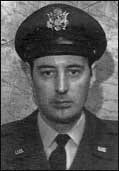24th April 1944, Duluth News Tribune
Fortress Crew had Lady Luck as Passenger - "Just plain luck," is the way Lt. Herbert J Coleman, veteran Flying Fortress pilot and son of Mrs Harriet Coleman, 1907 London Road, labels his string of bombing flights over Europe.
 Lieutenant Coleman, now home on leave, has the record of piloting 25 missions over Germany and France without having a single casualty among his crew members. Lieutenant Coleman, now home on leave, has the record of piloting 25 missions over Germany and France without having a single casualty among his crew members.
"The toughest mission? Well, that was the 13th, the one over Hannover. But none of them is easy. The flak is really tough. Some of the ships come back to their English bases, and the miracle is that they're able to fly at all," Lieutenant Coleman said last night.
During his combat service he went on a number of raids over Germany and France, Lille and Paris. On March 1, he was awarded the Distinguished Flying Cross for outstanding service in the line of duty. Previously he had been decorated with the Air Medal and three Oak Leaf clusters.
Questioned on the most notable thing that happened to him overseas, he recalled a nerve-wracking morning in London, when instead of bombing, he was being bombed by 12 or 13 German planes flying over the city. Americans stationed there, he said, are veterans of the bombings now and usually pitch in to dig out the bombed spots.
Lieutenant Coleman graduated from Morgan Park high school and attended Duluth State teachers' college. Following his leave, he will report to Atlantic City to await orders.
Notes:
Herbert James Coleman was born in Eveleth, Minnesota, in 1920, the eldest of five children of a banker. He graduated in journalism in 1939 at the University of Minnesota, Duluth. He learned to fly with the Minnesota Air National Guard, and received his wings and was commissioned a second lieutenant in the army air corps at graduation exercises held on 14th January 1943 at Blytheville, Arkansas. He arrived at RAF Chelveston, as a 22-year-old US Air Force Lieutenant-Pilot on 14th October 1943, the day that USAF lost 60 out of 288 bombers on raids over German ball-bearing factories, and was one of eight replacement crews asked to join the decimated 422nd Bomber Squadron. âI finally volunteered out of embarrassment at the silence that followed the request,â he recalled, âand went off to tell my crew what I had done. This got me a few sidelong looks, but they accepted their fate, as they did every time we flew.â But he and his crew were never asked to drop bombs. Instead they completed and survived 31 night missions, delivering propaganda leaflets to the occupied countries of Europe. In January 1945 Herbert was stationed at an army air base in Avon Park, Florida. He ended his military career as a Major in 1969.
In 1958 he worked for Aviation Week and Space Technology magazine, and after 28 years moved to the Pentagon as chief of current news and research service, and retired in 1994. He died 13th August 2000, and is buried at Quantico National Cemetery.
|